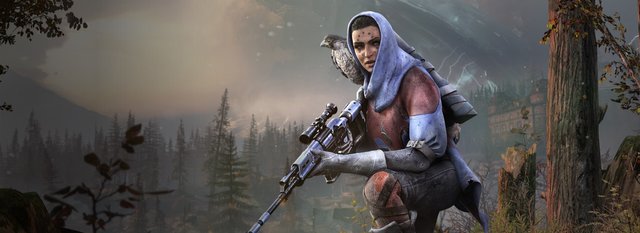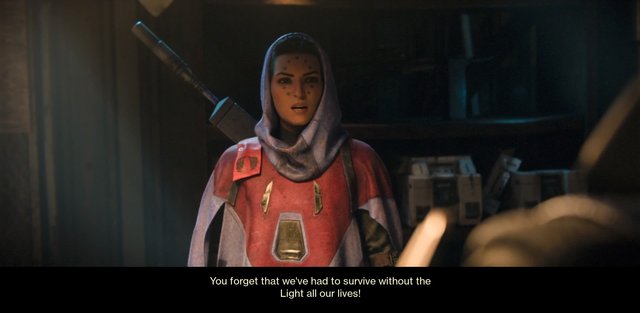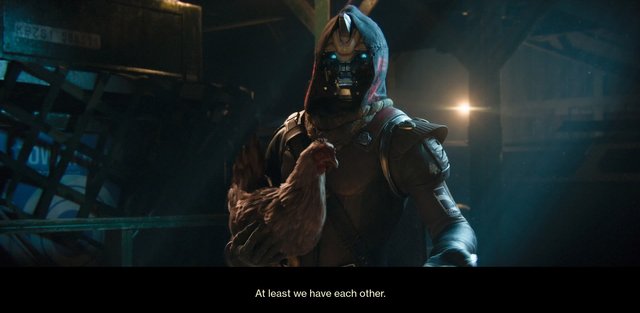Yes, Destiny 2 Delivers
At long last, Destiny 2 is here. It’s been hotly anticipated and cautiously monitored in equal measure since before its official announcement in March of this year. The first game had a controversial release back in 2014, with critics offering only lukewarm praise and general disappointment, yet it still managed to retain a remarkably active player-base far longer than most console shooters enjoy. While its critical reception improved with each of its four subsequent expansions — specifically 2015’s The Taken King and 2016’s Rise of Iron — players were looking forward to see how Bungie would make amends with a fresh start. Now, we know exactly what they had in mind.
This isn’t the first time I’ve written about Destiny or Bungie’s handling of their shared-world space opera franchise. I’ve been both an apologist and a critic of the first game, and both optimistic and biting of the lead-up to its highly anticipated sequel. I’ve invested a lot of time into the series over the past three years, and I both love it and want it to be better than it is. Over the past several days, I’ve dropped over 20 hours into Destiny 2, and I have some thoughts to share. Spoilers: it’s everything I’ve wanted it to be — familiar, but totally different.
Anybody who had the opportunity to play Destiny 2’s public beta knows exactly how this game starts: a new threat known as The Red Legion has come to sack The Tower and steal The Traveler’s Light. If there’s nuance to the plot, it must be in the later parts of the game. But what we know is that there’s a big bad named Ghaul who poses an existential threat to the Guardians and the Solar System as a whole. Players are charged with reuniting the scattered remains of the once-powerful fighting force and taking defeating The Red Legion. The story lays for us the framework through which players travel from planet to planet, collecting new abilities, new gameplay features, and (of course) new gear.
There’s not anything about Destiny 2’s story that feels particularly groundbreaking or original, but seeing any story told in this game world is very special in its own right. To say the first game had a story is like saying a dog has self control around an unguarded steak. I couldn’t tell you who the main bad guy was from the first game, or who that mysterious Guardian was that popped up in its handful of cutscenes, or what the deal was with The Queen. Destiny was a game filled to the brim with backstory and lore (or, the Grimoire was, anyway), but no narrative of its own to speak of. It would please solo players to know that there’s more plot and character development in the first five hours of Destiny 2 than in all of the first game, including its four expansions.
The campaign is fleshed out even further with optional Adventures peppered throughout the four open world environments. Each of these side quests ties directly into the main story, and are each more robust and engaging than any main quest from the first game. Add to that a slew of hidden Lost Sector locations sprinkled into the world, each with a promise of gear caches, and you’ll have a lot of game to play through before you ever repeat yourself. After over 20 hours with the game, I still haven’t finished the main quest-line, and the abundance of distractions is definitely a contributing factor.

Mechanically, Destiny 2 still feels like Destiny. There are some slight changes to weapon types and subclass abilities, but you’ll still be juggling Hand Cannons and Fusion Rifles, laying Tripmine Grenades, and lobbing Hammers of Sol at super-powered Servitors. All that stuff worked in Destiny, so the changes are minimal in that department. But it’s when you dive deeper that you get to see all the new folds in the systems. Unlike the first game’s upgrade tree associated with each piece of gear, items now have mods slots, which lend a great deal of customization, while freeing up one of the many layers of grind from the original title.
Another welcome change to the formula is Engrams. Rather than farming drops from caves of enemies and praying to RNGesus that the Cryptarch grant you quality goods, Engrams are earned from merchants and quest-givers in the bulk of the early game, much like Reputation Packages from the first game. You’ll eventually start to see them getting dropped in the world by high-value targets, but they never shake their rarity this time around.
Destiny 2 isn’t afraid of taking its time to roll out its content where it feels it is most appropriate, and it really makes for a great experience. Some people will pick up Destiny 2 just for the story, and they won’t have to suffer through caveats and concessions to enjoy it. You won’t get your Sparrow back until you reach the fourth planet. While classic Destiny players might be aghast at the implication of traversing the world on foot, it’s an appropriate point in the campaign, and acts as a guide through the player’s possible choices early on. Likewise, Patrol beacons don’t appear in the open world until late into the campaign, and even then they have to be unlocked with a fully featured mission. Strikes also make a late appearance, being made available only after players bring the team back together. There’s no rush to the end-game here, and it’s even possible to get your $60 worth without ever touching any of that stuff.
Like the first game, Destiny 2 is a blast with friends. I haven’t messed around at all with the Clan stuff, but I’m eager to check it out. With Destiny, I was always looking for players to join me in Raids and Nightfall Strikes, and Destiny 2’s new features seem like the perfect extension of those services. Guided Games promise an opportunity for everybody to see all the game’s best content by solving its biggest obstacle, which is assembling the necessary party. It was a limitation that prevented half of Destiny’s players from participating in the Raids, so it’s exciting to see Bungie finding a way to get more people into the fray.
I could go on about all the things I like about Destiny 2, but most of them seem to answer one problem: reduce grind. The biggest complaint about Destiny centered around the game artificially inflating its content by making everything a grind. Every piece of gear had to be leveled, materials had to be farmed, collecting and returning Bounties was a prerequisite of experience progress, Reputation had to be leveled from a dozen vendors… everything was made to be repeatable indefinitely, and it started an hour into the game. None of those substitutes for actual content are present here. There’s so much to do, and so many distractions along the way, that a player could go a dozen hours before they do anything twice. The game will eventually run out of new content, but it’s not in any rush to get me there. There’s an end-game here, but it seems this time it’s where it should be.


